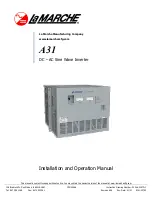
Solar Energy
If lightning protection systems are legally required
as an integral part of fire safety measures, they
must not be affected by PV power generation
systems.
The solar module must be installed on a
non-combustible, fire-resistant subsurface.
The location of a PV system must be care-
fully selected. If a system is placed near
trees and buildings, these may cause a
shadowing effect on the PV system for part
of the day. Permanent or regular shading
must be carefully avoided.
The direct current side must always be fitted
with a DC-compatible switch with breaking
capacity to ensure that the direct current side
can be disconnected when under load.
3.2
Guidelines on the electrical system
layout
Danger!
The solar module features a junction box
without a bypass diode. A permanent or regular
shadowing effect must be avoided at all costs.
Acceptable system configurations
Mounting
system
System
voltage
Functional
grounding
Bosch Solar
Rack Slide
1,000 V
Not required
Other
1000 V
Minus terminal
Warning!
The initial values of the module series are to be taken
into account when designing the layout and dimen-
sioning the system!
Danger!
Only Type MC4 couplers may be used to connect
modules. Do not remove the pre-fabricated coupler
assemblies!
Warning!
Type
μ
m-Si plus EU1510 modules must not be di-
rectly connected to previous products, such as
μ
m-Si
plus and
μ
m-Si plus EU1310!
Warning:
If
μ
m-Si plus EU1510 modules are not installed using
the Bosch Solar Rack Slide mounting system, a func-
tional grounding system must be fitted to the module's
line conductor (see permissible system configura-
tions)!
All PV strings in a PV system should be built
using the same technology, should feature
the same number of PV modules connected
in series and should be positioned at the
same angle (horizontally and vertically) to
keep mismatching and malfunctions to an
absolute minimum and improve output from
the PV system.
All PV modules in a PV system should also
feature the same rated values for their elec-
trical characteristic values, including those
regarding short-circuit currents, open-circuit
voltages, currents at maximum output, volt-
ages at maximum output and rated outputs
(under conformance testing conditions).
Solar modules feature a reverse-current re-
sistance of 6 A. The system should be de-
signed in such a way that a reverse current
resistance greater than 6 A is avoided.
These solar modules have been tested for a
maximum system voltage of 1,000V. This
means a maximum of 10 modules can be
electrically connected in series per string.
The maximum voltage for the connected sys-
tem components is to be taken into account
while doing so.
You should install inherently short circuit-
proof and earth fault-proof wiring for the indi-
cated system voltage.
7

































